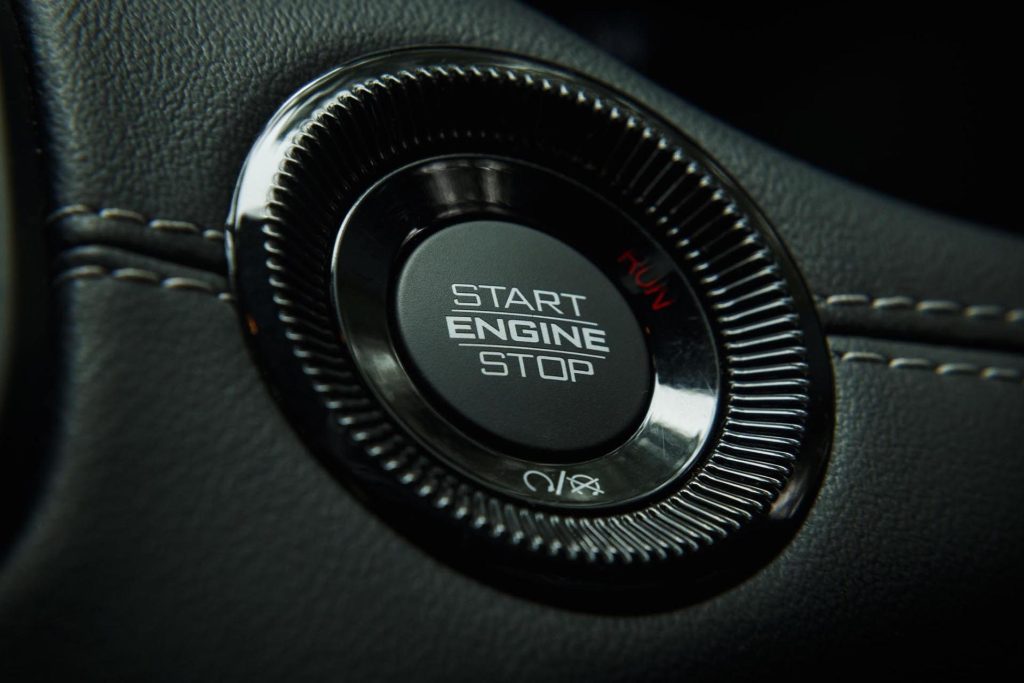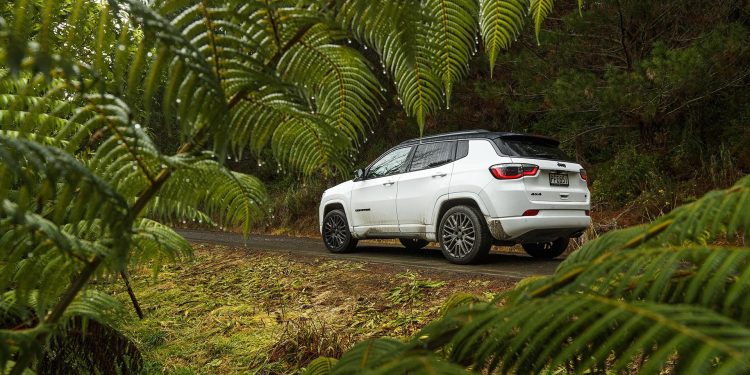2022 Jeep Compass S-Limited review
Words: Peter Louisson | Photos: Tom Gasnier
Compass has been updated, specified to the nines this time, though it has shot up in price. And it also carries a fair old CCD fee on top of all that. Worth it?
While we last tested the Jeep Compass in 2019, it has been here since the noughties. At that time it had a twin called the Patriot, and that was way before Donald J Trump started using that word, or indeed was even recognised as anything other than a NY property developer.

Well now the new Jeep Compass has touched down in New Zealand, still recognisable as such externally but with lots of new tech. Okay, so it still has the same old atmo engine but that’s about all that isn’t new. The 2.4-litre EFI mill is now hooked up to a nine-speed automatic transmission, at least in the S-Limited we’ve been driving. Back in the day it made 125kW and 220Nm at 4500rpm. And then it was hooked up to a CVT. These days it has a name, Tigershark, but really? We reckon it’s more a Catfish, with little extra drive (129kW/229Nm). Still, nine cogs helps process the power and the S-Limited is AWD. One can tow up to 1000kg, the base front-driver isn’t rated to tow.

Back in the day Compass sold in the $36k area but now this range topper, the S-Limited costs $59,990, and that’s before its $4000 slug of fossil fuel tax. Yikes. That’s because Rightcar NZ rates it at 10.8L/100km. For what it’s worth, our average was around 10.8 as well, mostly open road, falling back into single figures once we got back into town. That’s because it’s being driven at lower revs in the burbs.

Anyway, the higher number, 10.8, is the WLTP figure. Oddly enough, the front driver, aka Night Eagle, with the six-speed auto is more abstemious, rated by Jeep at 7.9L/100km. Odder still is that it’s also said to be quicker on the acceleration front – 9.3sec vs 10.1sec 0-100 – despite using the same engine. Perhaps it needs one less gear shift in the sprint test. Or maybe it’s in part because the nine-speeder takes its merry time upshifting.


In everyday use, you never see ninth and while the whole idea is to keep revs down, there’s very little drive there. A downshift sees fourth or fifth selected where the motor is much more cooperative.

It drives better than it used to, feeling more like a mini-Grand Cherokee, and it’s quiet on the go. It’s refined on the inside too, with leather trim for the upholstery and build quality several rungs up than the usual Jeep fare of yore. Okay, so the fuel filler cap didn’t quite sit flush within its housing and a hunk of foam stuck out from the seat lockpin when split folded. But there’s not much else to whinge about from this Indian-built machine. Certainly no rattles or squeaks.

Outwardly, there have been a handful of design changes. The bonnet is wider, and the fog lights are now integrated into the front bumper. The seven-slot grille is fancier, more aero-friendly too and lights are more technical to behold.

Inside, you will notice the new touchscreen which is intuitive enough but reacts best to a certain type of quick tap. The volume button is way over by the passenger, but a double appears on the flip side of the steering wheel, and there’s a mute button there as well. No paddles but these really aren’t missed because of the manual sequential shift lever, oriented the way it should be. You don’t really need to use that much though because the auto is reasonably reactive to your right foot. That’s despite there being no road drive modes; there’s Auto only. The two other settings are for off-roading. There’s low range here too, along with 4WD lock.

This is up to safety speed too including a collision avoidance warning that really wakes you up. As will the Drowsy Driver Alert, we’d imagine. Automatic Emergency Braking works for errant cyclists and pedestrians. We liked how easy it was to nix the Lane Keeping device too, using a button on the centre console.

This is no performance icon, rather like the Compass of the past. It can’t quite get to 100 in 10sec but providing you keep revs above about 2500 out of town it makes quiet, easy progress. The music starts to play in earnest from 3500rpm onwards. But keep that up and the tank runs dry fairly quickly. Guess the Cd figure of 0.35 doesn’t help much. It is really quiet on the go though, which is fortunate as the motor doesn’t roar like a tiger, and nor does it fight like a shark. A hybrid would be nice, like the one Jeep sells overseas. But then it would be even more expensive; however, it wouldn’t get socked with the $4k CCD fee.


As a drive otherwise, it isn’t bad. With decent Turanza rubber and full independent suspension it corners competently enough, not too much roll, and with good wheel weighting. The set-up offers a reasonable ride at open road speeds too, a bit firmer but not annoyingly so in built up areas. And all the time, the cabin is quiet, so long as you don’t give the engine a hard time.

This is over 50 per cent more expensive than the Compasses of old, but then it gets so much more kit. That said, our car had the $5000 options package fitted, which included heating and ventilation for the powered front seats, along with a toasty wheel warmer which is actually rather pleasant on chilly mornings. There’s also a panoramic sunroof and surround view camera, but all up you’re looking at $69k for this variant, which is getting up there for a compact SUV.


Other things we appreciate are auto-dipping headlights, a gesture controlled powered fifth door, and front parking sensors. Further differentiating the two models are 19-inch alloys on the Limited (fiddly damned things to clean they are too), a whole mess of external and internal cosmetic upgrades, Jeep Active Drive 4×4 with low range and Selec-Terrain system (road, mud, sand, snow), LED projector headlamps, and a rather nice Alpine nine-speaker sound system. The S-Limited also gets leather instead of cloth trim. It may be worth the $10k extra if you want or need 4wd or some towing ability.


Both models get pretty much all the modern safety features, including adaptive cruise and intelligent speed assist that takes cues from road side speed limits. They also share the cordless phone charging and keyless entry and pushbutton start. An updated Uconnect system includes sat nav and there’s Hey Jeep voice recognition for AC and radio settings, and the like. S-Limited gets a digital instrument cluster too.

There’s reasonable room in the rear seats, for two adults and a child in between but it’s not exactly a humongous hold (438-1155L) because of the high set floor and the subwoofer mounted on the right side. Width is limited so you need to split fold one side to get golf clubs in, for example.

For this sort of money, you can get a pretty nice mild hybrid medium SUV that will be much easier on gas. In which case the entry-level front driver is better value, unless you really need towing or off-road ability.
| Model | Jeep Compass S-Limited |
| Price | $59,990 |
| Clean Car Discount | Fee + $4,025 |
| Engine | 2359cc, IL4, EFI |
| Power/Torque | 129kW/229Nm |
| Drivetrain | 9-speed-auto, AWD |
| Fuel Use | 9.7L/100km |
| C02 Output | 230g/km |
| 0-100km/h | 10.37sec |
| 80-120km/h | 7.00sec (202.4m) |
| 100-0km/h | 34.91m |
| Stability systems | ABS, ESP, |
| Safety | AEB, BSM, LDW, RCTA, ALK, AHB |
| Luggage Capacity | 270-765-1335L |
| Tow rating | 540kg (1000kg braked) |
| Service intervals | 12 months/15,000km |
| Warranty | 3 years/150,000km |
| ANCAP rating | 5 stars (2017) |
| Weight | 1503kg (claimed) |





